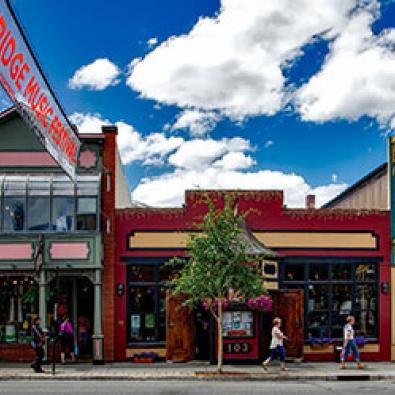
A Guide To Learning A New Neighborhood
Doesn’t matter if it’s on the other side of state, the other side of the country, or the other side of the world. It’s a new neighborhood. One of the anxieties that accompany moving is the loss of familiarity, the loss of confidence that comes from knowing who, what, where and when. You can alleviate that anxiety by getting yourself “up to speed” with your new surroundings. The sooner you do that, the sooner you can relax and feel at home.

RESEARCH BEFORE YOU MOVE
First things first, have you fully decided on a new neighborhood or are you still searching for the right place? Neighborhood search guides can easily be found on home living and lifestyle blogs. You may also come across helpful articles that can help you pinpoint a suggested neighborhood pertaining to your lifestyle. Including websites built for prospecting residents like Niche’s list of best cities for millennials in America, LawnStarter’s infographic on why everyone is moving to Fort Worth, or Sparefoot’s guide to neighborhoods in New York.
Performing local searches online are really helpful as a starting point and can also help you find information including city codes. Codes usually include issues such as high weeds, trash, commercial vehicles parked on private properties, operating a business from the home, and what is expected of animal owners.
Many municipalities have websites, where you can find a treasure trove of information. Note the information listed for any emergency facilities, as safe keeping. In addition to municipality websites, local businesses typically have guides that can provide helpful information specific to neighborhood you’re looking to move into.

CONNECT WITH THE LOCALS FOR RECOMMENDATIONS
Maybe you know this trick – bring up Google Maps, center it on desired living location, then search for what is nearby by entering “libraries,” “restaurants,” “theaters,” etc. You can also join various meetup websites or look for a local social media page dedicated to the appropriate city. This can help you connect with locals and find groups of people that share the same interests as you.
With all the advantages that technology brings to our lives, sometimes you just can’t beat talking to a real person. You’ve got the perfect ice breaker, “Hi, I just moved here and am wondering (where, what, who).” Most people will be happy to help: Your neighbors or even people you meet in passing wherever you go. It’s important to reach out and connect, especially if you don’t know too many people in the area.

TAKE THE TIME TO EXPLORE THE NEIGHBORHOOD
No matter how precise the map, things look different in person. Search the places that are necessary to your daily living needs: supermarket, pharmacy, hardware store, coffee house, etc. Do practice runs to your job or the kids’ schools. You don’t want to find out on the first day that routes have changed, streets are one-way or closed for construction.

UNDERSTAND THE WEATHER CONDITIONS
This is one more thing you will want to learn, especially if it’s a dramatic climate zone change. Besides learning to control your new home as energy efficiently as possible, the climate takes a toll on your outdoor living space. You can easily find information online regarding pollen levels, precipitation, and average seasonal temperatures.
If you live a more eco-centric lifestyle, looking beyond weather patterns can be beneficial. Local universities have dedicated websites for the departments that distribute extensive information about specific horticulture statistics.
Whether it be online or on foot, do your research and get out to exploring your new neighborhood!
